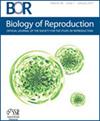解码复发性妊娠损失:比较蛋白质组学研究的启示
IF 3
2区 生物学
Q2 REPRODUCTIVE BIOLOGY
引用次数: 0
摘要
反复妊娠流产(RPL)是一种常见疾病,影响高达 2% 的待产妇女,对家庭和社会造成长期影响。在超过一半的病例中,导致这一疾病的因素仍然未知。比较蛋白质组分析可为了解 RPL 发病机制的生物学途径提供新的视角。迄今为止,已有人通过比较蛋白质组学研究分析了 RPL 妇女的绒毛、蜕膜、胎盘、子宫内膜和母体血液。在这篇综述中,我们通过使用 PubMed 和谷歌学术数据库进行系统的文献检索,旨在对已发表的人体样本 RPL 比较研究进行批判性评估。我们详细概述了所分析的材料、蛋白质组学平台、建议的候选生物标志物以及与 RPL 相关的改变途径和过程。我们讨论了所有研究中最重要、最确定和最有效的候选生物标志物,随后对现有高通量数据进行了生物信息学分析,并介绍了 RPL 中常见的改变过程和途径。最后,还讨论了开发新的高效治疗策略的未来方向。本文章由计算机程序翻译,如有差异,请以英文原文为准。
Decoding recurrent pregnancy loss: insights from comparative proteomics studies
Recurrent pregnancy loss (RPL) represents a common disorder that affects up to 2% of the women aiming at childbirth with long-term consequences on family and society. Factors contributing to it in more than half of the cases are still unknown. Comparative proteomic analysis can provide new insights into the biological pathways underlining the pathogenesis of RPL. Until now, chorionic villi, decidua, placenta, endometrium, and maternal blood from women with RPL have been analyzed by comparative proteomics studies. In this review, we aimed to provide a critical evaluation of the published comparative studies of RPL on human samples, gathered by systematic literature search using PubMed and Google Scholar databases. We provide a detailed overview of the analyzed materials, proteomics platforms, proposed candidate biomarkers and altered pathways and processes linked with RPL. The top, most identified and validated biomarker candidates from all studies are discussed, followed by bioinformatics analysis of the available high-throughput data and presentation of common altered processes and pathways in RPL. Finally, future directions aimed at developing new and efficient therapeutic strategies are discussed as well.
求助全文
通过发布文献求助,成功后即可免费获取论文全文。
去求助
来源期刊

Biology of Reproduction
生物-生殖生物学
CiteScore
6.30
自引率
5.60%
发文量
214
审稿时长
1 months
期刊介绍:
Biology of Reproduction (BOR) is the official journal of the Society for the Study of Reproduction and publishes original research on a broad range of topics in the field of reproductive biology, as well as reviews on topics of current importance or controversy. BOR is consistently one of the most highly cited journals publishing original research in the field of reproductive biology.
 求助内容:
求助内容: 应助结果提醒方式:
应助结果提醒方式:


